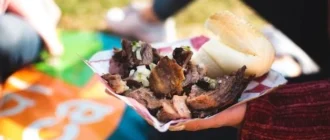The World’s Weirdest Foods
Food is a fundamental part of human culture‚ and every corner of the globe boasts its unique culinary traditions. While some dishes are universally appealing‚ others can be considered downright bizarre‚ even repulsive‚ to those unfamiliar with them. These unusual foods often stem from cultural norms‚ historical necessities‚ and unique environments‚ making them a fascinating glimpse into the diverse tapestry of human experience.

A Journey into the Unusual: Delicacies That Challenge the Palate
Traveling is often about trying the unusual and attempting to experience a different culture in the country you’re visiting. One of the best ways to do this is to try the foods locals eat. They may not be to everyone’s tastes‚ but the following foods‚ considered weird and bizarre‚ or even dangerous to outsiders‚ are considered delicacies in their own right:
- Kiviak (Greenland): This traditional Inuit dish is not for the faint of heart. Kiviak involves stuffing hundreds of small seabirds called auks into a seal skin‚ burying it for months to ferment‚ and then consuming the birds whole. The fermentation process creates a pungent aroma and a flavor that can only be described as acquired.
- Casu Marzu (Sardinia‚ Italy): This “rotten cheese” is deliberately infested with cheese fly larvae. The larvae accelerate the fermentation process‚ resulting in a soft‚ pungent cheese. While considered a delicacy by some Sardinians‚ casu marzu is illegal to sell commercially due to health concerns.
- Balut (Philippines): A common street food in the Philippines‚ balut is a fertilized duck embryo that is boiled alive and eaten in the shell. It’s a protein-rich snack‚ but the visual and the thought of eating a partially developed duck can be off-putting to many.
- Century Egg (China): Despite the name‚ century eggs are not actually preserved for a century‚ but rather for a few weeks to a few months. Duck‚ chicken‚ or quail eggs are preserved in a mixture of clay‚ ash‚ salt‚ quicklime‚ and rice hulls. This process transforms the yolk into a dark green‚ creamy substance and gives the egg a pungent‚ sulfurous aroma.
- Escamoles (Mexico): Often called “insect caviar‚” escamoles are the edible larvae and pupae of ants found in the roots of the agave plant. They have a buttery‚ slightly nutty flavor and are considered a delicacy in Mexican cuisine.
Beyond the “Ick” Factor: Understanding Cultural Perspectives
It’s easy to react to these unusual foods with disgust or fear‚ but it’s important to remember that what is considered “weird” is subjective and culturally defined. Many of these dishes have been consumed for centuries and are deeply ingrained in cultural traditions and history.
- Scarcity and Survival: In many cases‚ what we might consider “weird” foods were born out of necessity. In harsh environments or times of scarcity‚ people had to find ways to utilize all available resources for sustenance. Kiviak‚ for instance‚ was a way for the Inuit people to preserve food for the long winter months.
- Acquired Tastes: Like many culinary preferences‚ the enjoyment of these unusual foods often comes down to acquired taste. What may seem strange or unpleasant at first can become a beloved delicacy with repeated exposure.
- Cultural Significance: Many of these dishes hold deep cultural significance. They may be associated with special occasions‚ festivals‚ or rituals. For example‚ casu marzu is traditionally eaten during celebrations in Sardinia.

Expanding Culinary Horizons: A World of Flavors Awaits
The world of food is vast and diverse‚ offering a smorgasbord of flavors and textures that can challenge our preconceived notions of what is palatable. While the thought of eating fermented shark‚ live octopus‚ or ant larvae might not be immediately appealing‚ these unusual foods represent a world of culinary adventure waiting to be explored. By approaching these dishes with an open mind and a willingness to step outside our comfort zones‚ we can gain a deeper appreciation for the diverse cultures and traditions that shape our world.










